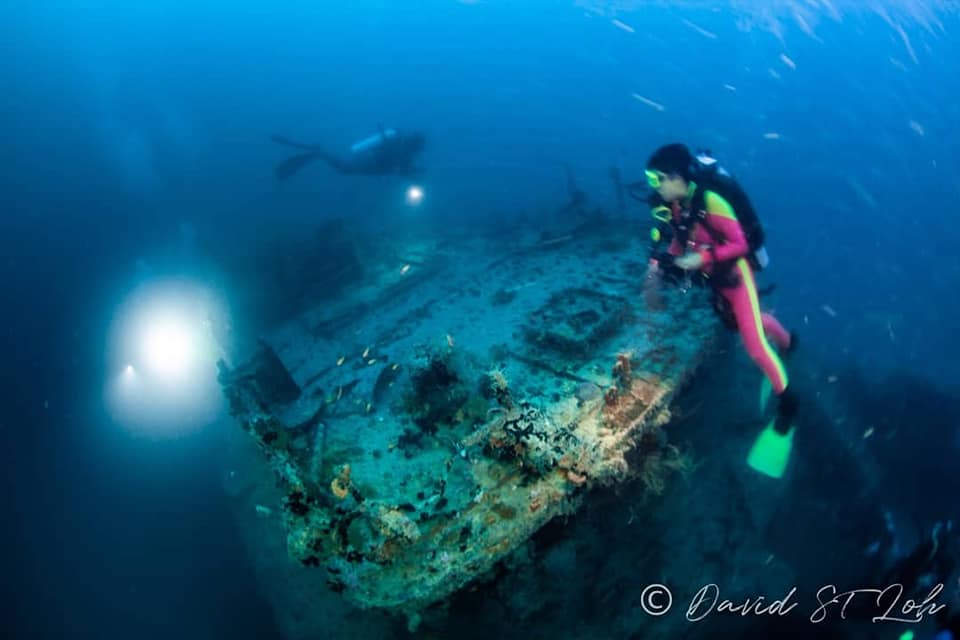Wreck diving is a type of recreational diving where shipwrecks are explored. Although most wreck dive sites are at shipwrecks, there is an increasing trend to scuttle retired ships to create artificial reef sites.
A shipwreck is attractive to divers for several reasons:
- it is an artificial reef, which creates a habitat for many types of marine life
- it often is a large structure with many interesting parts and machinery, which is not normally closely observable on working, floating vessels
- it often has an exciting or tragic history
- it presents new skill challenges for scuba divers
- it is part of the underwater cultural heritage and may be an important archaeological resource
- it provides a first-hand insight into context for the loss, such as causal connections, geographical associations, trade patterns and many other areas, providing a microcosm of our maritime heritage and maritime history
The Advanced Wreck Diving Handbook-Gary Gentile sub-divides wreck diving into three categories:
- Non-penetration diving (ie. swimming over the wreck)
- Limited penetration diving, within the “light zone”
- Full penetration diving, beyond the “light zone”
Each succeeding level involves greater risk, and therefore will normally require greater levels of training, experience and equipment.
Non-penetration wreck diving is the least hazardous form of wreck diving, although divers still need to be aware of the entanglement risks presented by fishing nets and fishing lines which may be snagged to the wreck (wrecks are often popular fishing sites), and the underlying terrain may present greater risk of sharp edges.
Penetration within the light zone presents greater hazards due to overhead and greater proximity of the wreck’s structure, but because of the proximity of a visible exit point, and some amount of external light, those hazards are more manageable. However, there is clearly a much greater risk of entanglement and siltout inside of the structure, as well as the requirement to move laterally to a defined exit point before one can surface in the event of an emergency.
Full penetration involves the greatest level of risks, including the risk of getting lost within the structure, the risk of complete darkness in the event of multiple light failures, and the inability to escape unassisted in the event of a disruption to air supply.
It is Planet Scuba India’s ongoing initiative to locate wreck diving sites along the Indian coastline.


